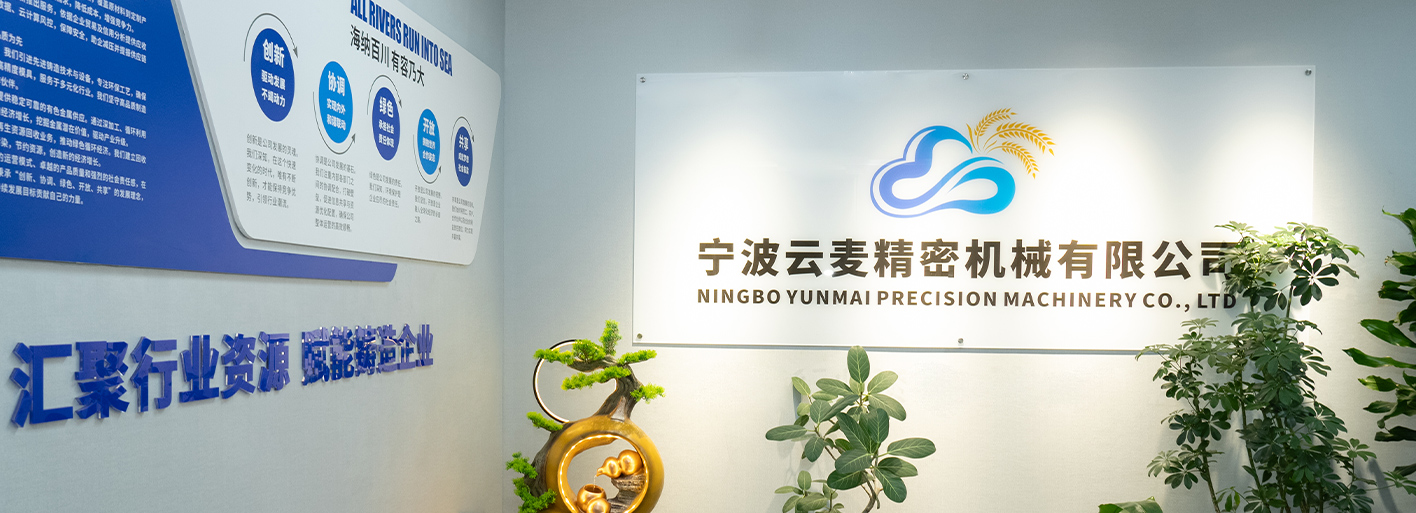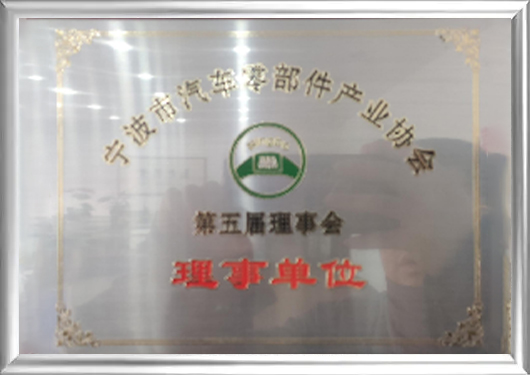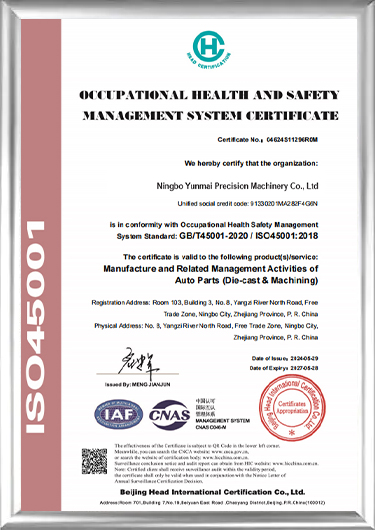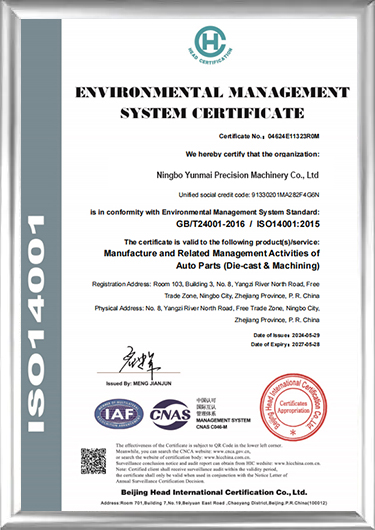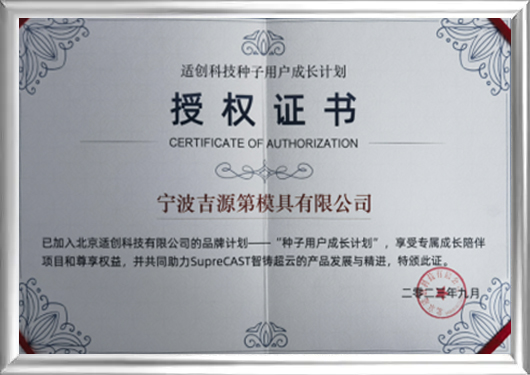The design of a die-casting mold is an intricate process that requires careful consideration of several factors, all of which must align to ensure the mold produces high-quality transmission components. Some of the key considerations that Ningbo Yunmai Precision Machinery Co., Ltd. takes into account when designing molds for transmission components include: The first step in mold design is selecting the appropriate materials for both the mold and the transmission components. Aluminum alloys, which are often used in die-casting due to their excellent fluidity and low melting point, are the preferred choice for casting transmission components. The mold material itself must be capable of withstanding high temperatures and the erosive nature of molten aluminum, while also offering excellent heat conductivity to help manage the cooling process. Ningbo Yunmai Precision Machinery Co., Ltd. uses advanced alloys and high-strength steel to manufacture molds that maintain their integrity under repeated cycles of high-pressure die-casting. One of the most crucial factors in aluminum die-casting is controlling the temperature of the mold during the casting process. The mold must rapidly cool the molten aluminum to solidify it in the desired shape while maintaining dimensional accuracy. This requires sophisticated cooling channels designed within the mold to ensure uniform cooling and to avoid warping or cracking. Ningbo Yunmai Precision Machinery Co., Ltd. employs advanced techniques in thermal management to ensure that molds are designed with efficient cooling channels, which is vital for achieving the required production cycle times without sacrificing quality. The cavity design is the central aspect of the mold, as it determines the shape and dimensions of the aluminum die-cast part. For transmission components, the cavity must be designed to accommodate complex shapes and features, such as intricate holes for shafts or ridges for gears. The mold cavity must also allow for uniform material flow during the injection of molten aluminum. Ningbo Yunmai Precision Machinery Co., Ltd. utilizes sophisticated computer-aided design (CAD) software to model the cavity design, ensuring that every detail of the transmission component is captured accurately.
Once the molten aluminum has solidified and the part is formed, it must be ejected from the mold. An efficient ejection system is essential to prevent damage to the part and the mold itself. The design of the ejection system depends on the geometry of the transmission component and must ensure smooth, reliable ejection without leaving defects on the surface of the cast part. Ningbo Yunmai Precision Machinery Co., Ltd. integrates precision ejection systems into its mold designs to ensure smooth and consistent removal of transmission components, even when dealing with parts of complex shapes and geometries. The gate and runner system controls the flow of molten aluminum from the injection nozzle into the mold cavity. A well-designed runner system ensures that the molten metal is distributed evenly throughout the mold, filling all areas of the cavity before cooling begins. In transmission components, where high precision is essential, the design of the gate and runner system can significantly impact the quality of the final part. Ningbo Yunmai Precision Machinery Co., Ltd. designs and manufactures molds with optimized gating and runner systems, ensuring that molten aluminum flows uniformly and that the finished components have the desired structural integrity.
The parting line, where the two halves of the mold meet, is a critical feature in the mold design. The parting line must be strategically placed to minimize its impact on the appearance and functionality of the final transmission component. For complex parts, the parting line must also be designed to prevent air traps or defects during casting. Ningbo Yunmai Precision Machinery Co., Ltd. has extensive experience in designing molds with clean and well-placed parting lines that ensure minimal post-casting defects and smooth surface finishes for transmission components. Surface finish is particularly important in transmission components, as imperfections on the surface can lead to friction, wear, and reduced performance. The mold design must consider the desired surface finish of the aluminum casting. Ningbo Yunmai Precision Machinery Co., Ltd. offers molds that provide smooth and high-quality finishes, minimizing the need for secondary machining processes, and ensuring that the transmission components are ready for assembly or use immediately after casting.
Once the design phase is complete, the manufacturing of the aluminum die-casting mold begins. The manufacturing process involves several precision engineering steps, each of which must be carried out with meticulous attention to detail to achieve the desired mold quality. Computer Numerical Control (CNC) machining is one of the most critical steps in the manufacturing of aluminum die-casting molds. Ningbo Yunmai Precision Machinery Co., Ltd. employs state-of-the-art CNC machines to produce high-precision mold components. This technology allows for the creation of intricate features, such as complex cavity designs and cooling channels, that would be impossible to achieve with traditional machining methods. For molds that are subjected to high temperatures and pressures, the mold components must be made from high-strength steel or specialized alloys. These materials are chosen for their durability and resistance to wear and thermal expansion. Ningbo Yunmai Precision Machinery Co., Ltd. ensures that all mold components are cast with extreme precision, adhering to strict quality standards to ensure longevity and performance.
Once the individual mold components are machined, they are assembled into a complete mold. The assembly process must be carried out with precision to ensure that all parts align perfectly and that the mold is ready for the die-casting process. During this phase, the mold undergoes rigorous inspections to ensure that all components are correctly fitted and that there are no defects that could affect the casting process. After the mold has been assembled, it undergoes surface treatment to enhance its durability and resistance to wear. Surface treatments, such as nitriding or coating with specialized materials, help to increase the life of the mold and prevent damage from repeated cycles of high-pressure die-casting. Ningbo Yunmai Precision Machinery Co., Ltd. uses advanced surface treatment techniques to ensure that the molds can withstand the harsh conditions of the die-casting process and maintain their precision over long production runs. Before a mold is deemed ready for production, it undergoes extensive testing to ensure that it meets all design specifications. This includes testing for dimensional accuracy, thermal performance, and the ability to withstand the pressures of die-casting. Ningbo Yunmai Precision Machinery Co., Ltd. uses advanced quality control systems to conduct thorough inspections at every stage of the manufacturing process, ensuring that the molds produced are of the highest quality.
